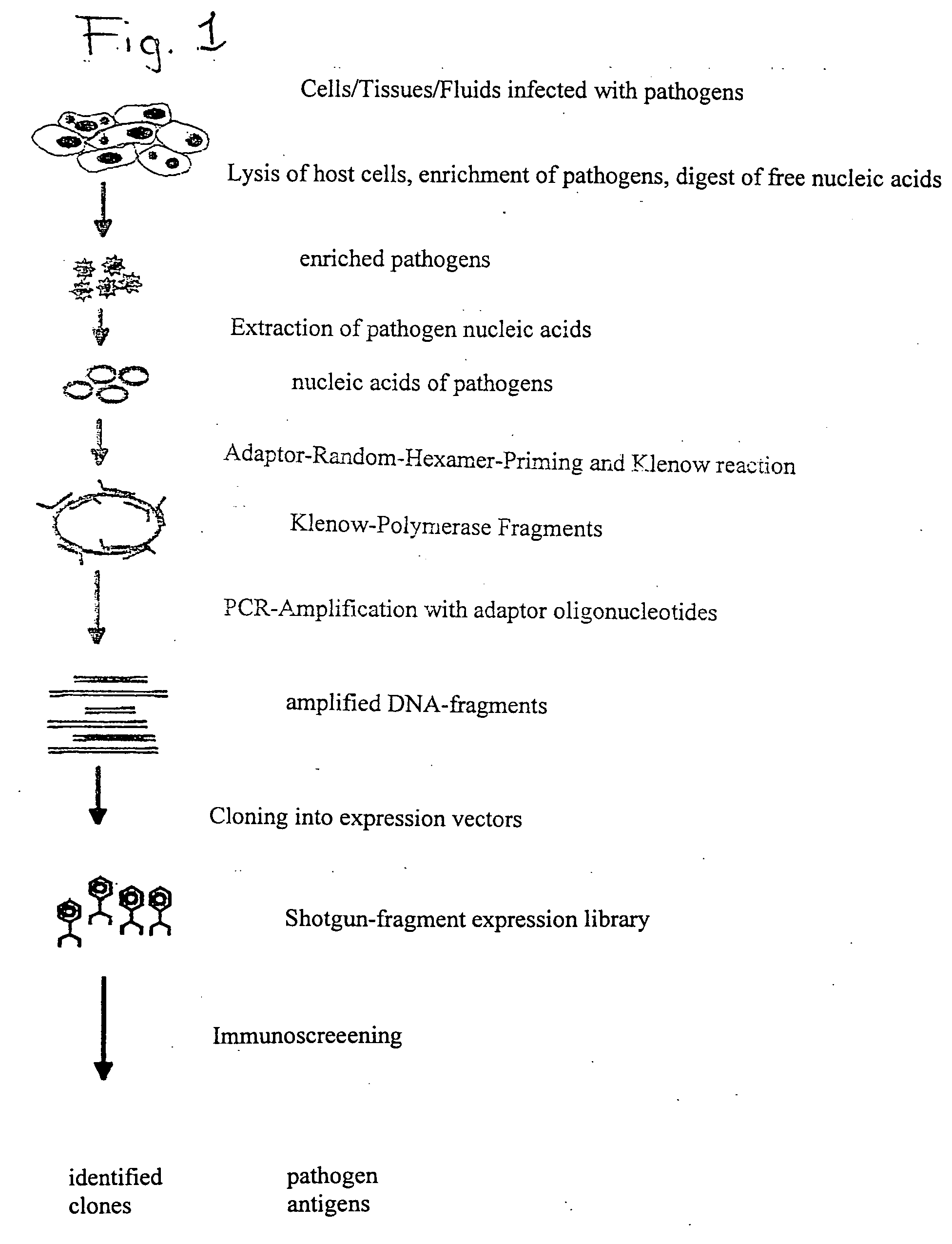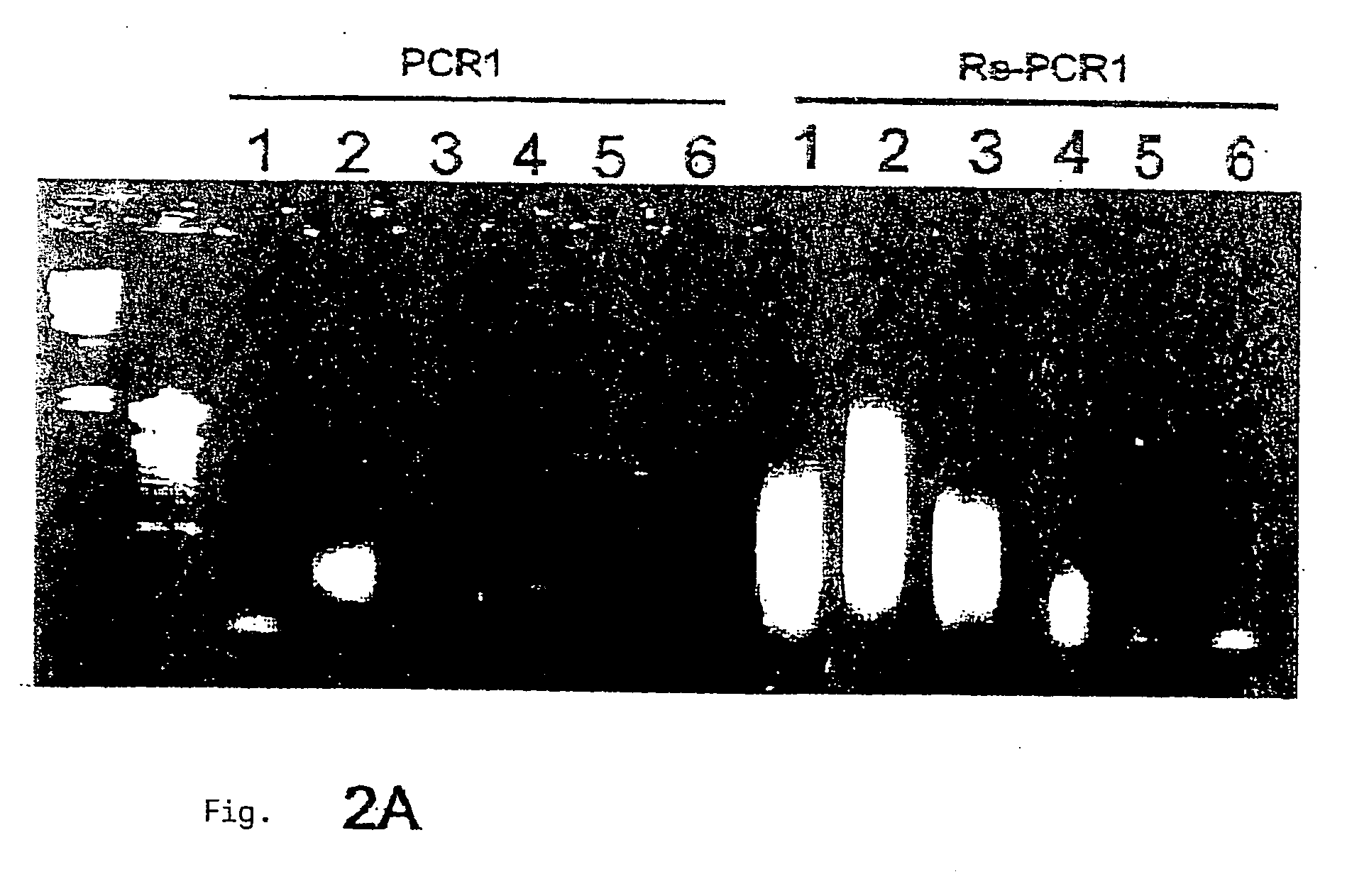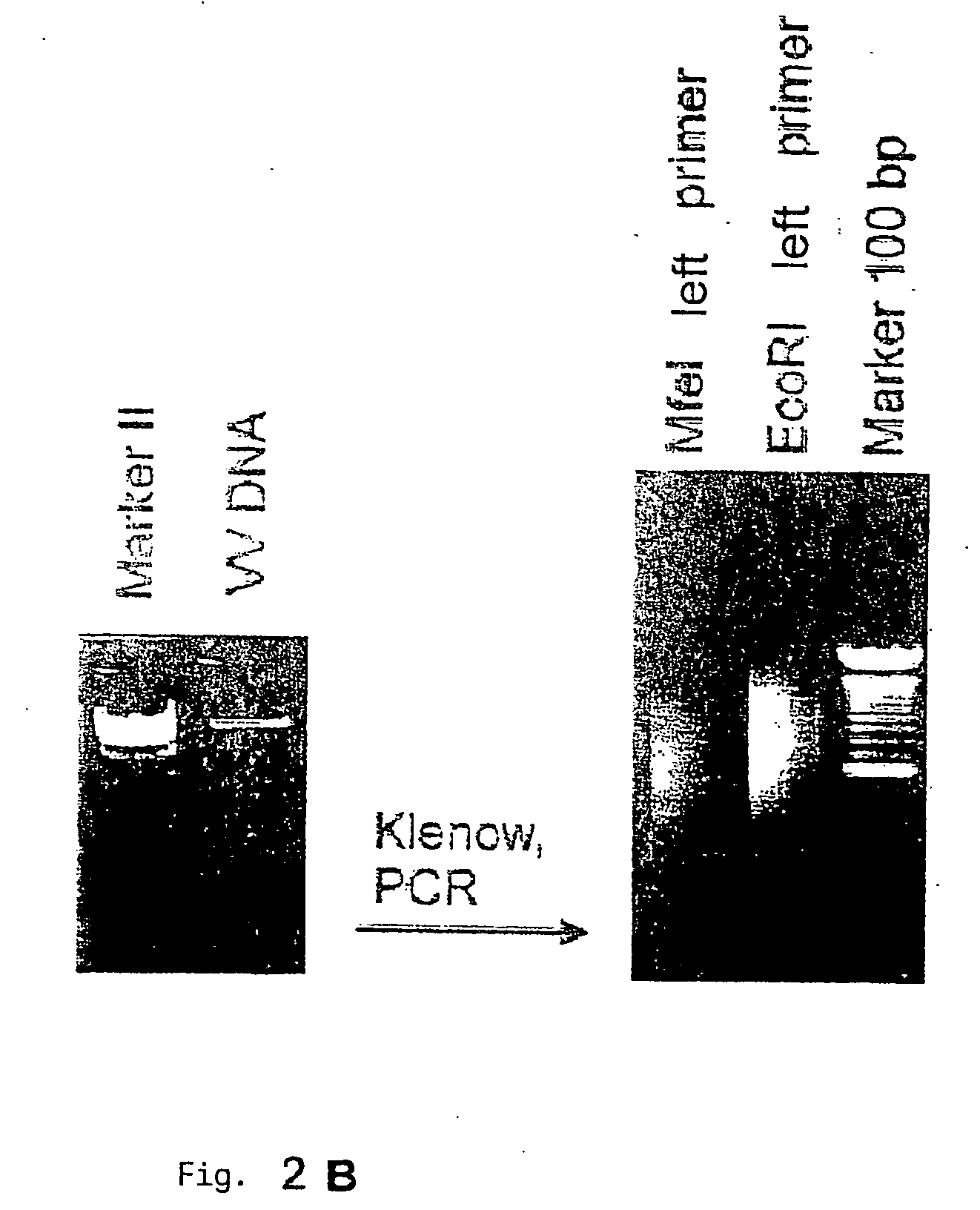Method for identifying biologically active structures of microbial pathogens
- Summary
- Abstract
- Description
- Claims
- Application Information
AI Technical Summary
Benefits of technology
Problems solved by technology
Method used
Image
Examples
example 1
[0114] Isolation of Pathogen Nucleic Acids from Virus-infected Cells:
[0115] BSC40 cells were infected with 2.times.10.sup.6 pfu of vaccinia viruses. The infected cells were incubated for 24 hours at 37.degree. C. in a CO.sub.2 incubator and then harvested. The harvested cells were then homogenized and absorbed in a buffered medium. To separate virus particles from host cell fragments, the cell lysate absorbed by the medium was then treated with ultrasound. Coarse particulate structures were pelleted by centrifugation for 15 min at 3000 rpm. Following centrifugation, the supernatant was removed and the pellet discarded. In order to precipitate corpuscular particles in the supernatant, 2 mL of cooled supernatant were precipitated with 6% PEG6000 / 0,6M NaCl (1 h incubation on ice); the precipitate was then pelleted for 10 min by centrifugation at 10000.times.g. As the preceding steps should have yielded both a separation and a lysis of contaminating host cells, the precipitate was then ...
example 2
[0116] Infection with Vaccinia Virus and Obtaining Serum
[0117] Recombinant vaccinia virus with the glycoprotein of the vesicular stomatitis virus (VaccG) (Mackett et al. (1985), Science 227, 433-435.) was cultured on BSC40 cells and the virus concentration determined in a plaque assay. C57BL / 6 mice (Institute of Laboratory Animal Science, University of Zurich) were infected intravenously with 2.times.10.sup.6 pfu of VaccG. Blood samples of 200-300 .mu.l were taken from the mice on days 8, 16 and 30 following infection, and serum was obtained through centrifugation and stored at -20.degree. C.
[0118] After the mice had been immunized, the successful induction of anti-vaccinia antibodies was tested against VSV in a neutralization assay (Ludewig et al. 2000. Eur J Immunol. 30:185-196) to determine the best time to extract serum for the planned analyses. As shown in Table 1, the increase of both the total immune globulin and the IgG class reached its maximum as of day 16, so that this se...
example 3a
[0119] Global Amplification of Minimai Amounts of Pathogen Nucleic Acids
[0120] The global amplification of genomic nucleic acids of the pathogen is an essential step in the procedure according to the invention. The main challenge in this is to amplify in a comprehensive manner (i.e. including all the segments of the genome, if possible) the very small amount of genomic germinal nucleic acids which are isolated (without pre-culturing) from infected tissue. The amplified DNA must also be expressable and clonable for subsequent screening. While PCR-amplified cDNA-expression libraries are often described, produced and used (e.g. Edwards et al., 1991) and are sometimes commercialized as kits (e.g. SMART-cDNA library construction kit, Clontech), the establishment of comprehensive genomic libraries based on small amounts of pathogen nucleic acids (<10 ng) has hitherto not been described. It was therefore necessary to develop a DNA amplification module for the method according to the invent...
PUM
| Property | Measurement | Unit |
|---|---|---|
| Fraction | aaaaa | aaaaa |
| Fraction | aaaaa | aaaaa |
| Fraction | aaaaa | aaaaa |
Abstract
Description
Claims
Application Information
 Login to View More
Login to View More - R&D
- Intellectual Property
- Life Sciences
- Materials
- Tech Scout
- Unparalleled Data Quality
- Higher Quality Content
- 60% Fewer Hallucinations
Browse by: Latest US Patents, China's latest patents, Technical Efficacy Thesaurus, Application Domain, Technology Topic, Popular Technical Reports.
© 2025 PatSnap. All rights reserved.Legal|Privacy policy|Modern Slavery Act Transparency Statement|Sitemap|About US| Contact US: help@patsnap.com



